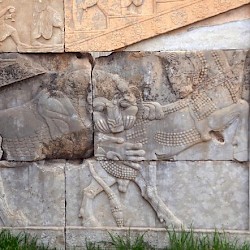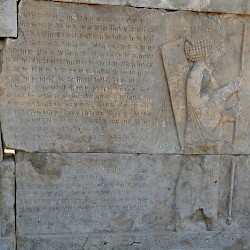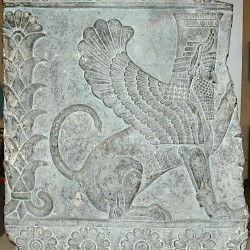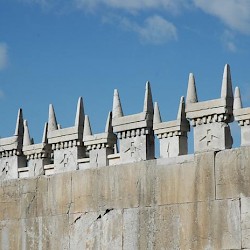Persepolis, Palace of Artaxerxes
Persepolis (Old Persian Pârsa, modern Takht-e Jamshid): Greek name of one of the capitals of the ancient Achaemenid Empire, founded by king Darius the Great (r.522-486 BCE). There were several satellite sites, Naqš-e Rustam and Takht-e Rustam.
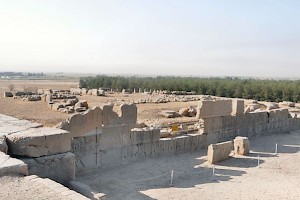
The ruins of the palace of Artaxerxes I Makrocheir ("palace H") are not the most famous part of Persepolis, and it is easy to understand why. Hardly anything of this palace is left, especially compared to the palace of Darius I the Great, which is across a little courtyard (probably a garden). King Artaxerxes III Ochus later added a staircase on the northern side of the palace - inscription A3Pa offers the name of the builder - which was intended to mirror the southern staircase of Darius' palace and created a more or less symmetrical court.
The decoration of the palace of Artaxerxes has produced several minor puzzles. One of them is the group of "horns" at the edge of the terrace near the palace of Artaxerxes I. No one knows their significance. Just decoration?
There's also a bearded sphinx that can be dated to the reign of Artaxerxes III. It is, therefore, almost a century younger than the palace. This type of animal usually was facing a colleague, and between must have been the winged figure of Ahuramazda. Where is the rest? Was this sphinx originally in another building, and was it moved to the palace of Artaxerxes I? Or was the palace of Artaxerxes I redecorated? We don't know.
